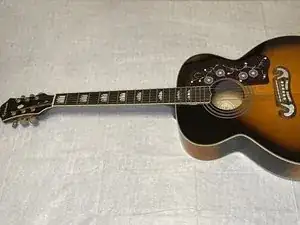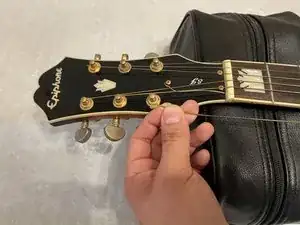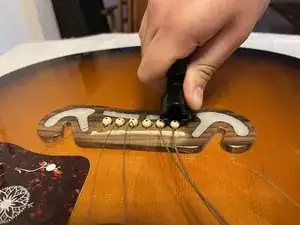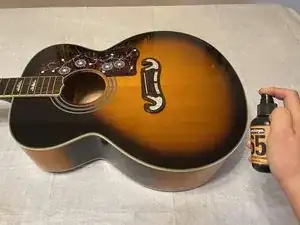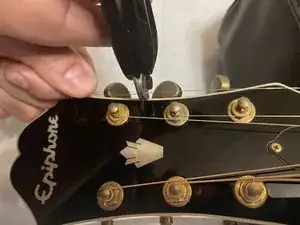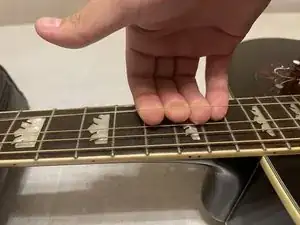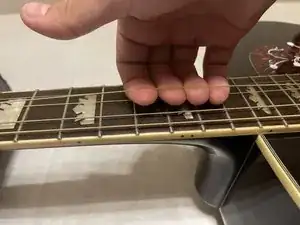Introduction
This serves as a guide to properly restring, clean, and maintain an Epiphone EJ-200 acoustic guitar, or any acoustic guitar with the same kind of setup. Follow the instructions to maintain your instrument throughout years of playing music. This guide will help avoid any unwanted luthier work on your guitar because of the negligence of care to your instrument.
Tools
Parts
-
-
Clear the workspace of any items or clutter that could damage the finish of the guitar.
-
Support the neck of the guitar with a stand or bag.
-
-
-
Use a scouring pad to clean and oil the fretboard, frets, and bridge with the Dunlop Lemon Oil.
-
Let the oil sit and seep into the wood for five minutes.
-
Once done, wipe off all of the excess oil with a microfiber cloth.
-
-
-
Use the Dunlop cleaner to clean the front, back, sides, and neck of the guitar.
-
Finish up with the Dunlop Carnauba wax to polish the front, back, sides, and neck of the guitar.
-
-
-
Cut the strings to size.
-
For the bass strings, measure one tuner head's length and trim it there.
-
For the treble strings, measure one and a half tuner head's length and trim it there.
-
When inserting the string into the tuning post, the string end should protrude approximately 1/8th of an inch from the tuner hole.
-
The bass side tuning pegs should be turned in a counter-clockwise direction to tune to pitch and the treble side tuning pegs should be turned in a clockwise direction to tune to pitch.
-
-
-
Stretch out each of the strings to help them intonate and stay in tune faster.
-
Repeat this step until the guitar stays in tune.
-
